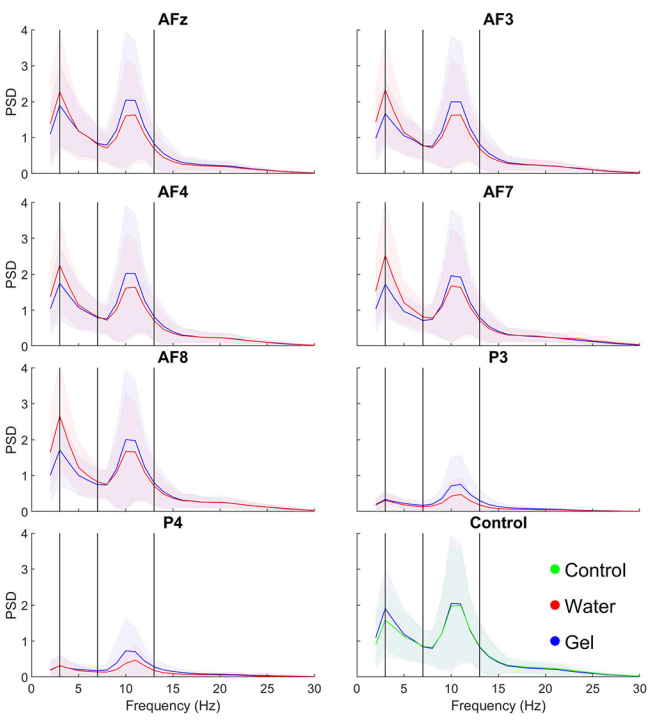
Figure 1.
Scheme of the experimental set-up. (A) A scheme of the position of the electrodes and instrumental set-up. Water-based electrodes are shown in red, gel-based electrodes in blue, and the control electrode in green. (B) The actual experimental set-up was used for the EEG sensors comparison. (C) Mindtooth Touch EEG headset, designed for working with water-based electrodes (right), and modified version equipped with the LiveAmp amplifier (left).




